丝裂霉素C,分析标准品,HPLC≥99%
产品编号:西域质检-TM59998| CAS NO:50-07-7| 分子式:C15H18N4O5| 分子量:334.327
Mitomycin C 是一种抗肿瘤类抗生素,通过阻断DNA合成抑制多种肿瘤细胞。Mitomycin C通过诱导DNA链间交联,物理性阻断DNA复制,重组和RNA转录。Mitomycin C增强TRAIL-诱导的HCT116 (p53-/-)结肠癌细胞的凋亡,并通过死亡受体不依赖于JNK的上调使耐TRAIL的结肠癌细胞HT-29对细胞因子敏感。Mitomycin C 还是一种 ADC 毒性分子 (ADC Cytotoxin),可以诱导凋亡 (Apoptosis) 作用。
本网站销售的所有产品仅用于工业应用或者科学研究等非医疗目的,不可用于人类或动物的临床诊断或者治疗,非药用,非食用,
丝裂霉素C
This certificate is designed in accordance with ISO 17034 and ISO Guide 31. This reference material (RM) was designed,produced and verified in accordance with ISO/IEC 17025, ISO 17034 and a registered quality management system ISO 9001.
(紫蓝色固体)______
冷藏(2~8)℃,置于阴凉处
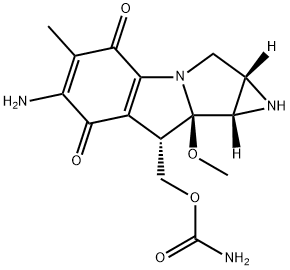
The certified value(s) and uncertainty(ies) are determined in accordance with ISO 17034 with an 95% confidence level(k=2). Uncertainty is based on the Total Combined Uncertainty, including uncertainties of characterisation, homogeneity and stability testing. Stability values are based on real evidence opposed to simulation.
The balances used for gravimetric measurements are calibrated with weights traceable to the national standards. The calibration of the balances is verified annually by an external accredited calibration service. This analysis method has been verified using an approach consistent with ISO 17034:2016 & ISO 17025:2017.
| CERTIFICATE ON | QC SIGNATURE | |
| - |

|
RM Release |
This RM is intended for use in a laboratory as a calibration and quality control standard or in method development for analytical techniques.
This reference material meets the specification stated in this certificate until the expiry date, provided it is stored unopened at the recommended temperature here in. If storage after opening is necessary, the RM should be tightly closed and kept from light and moisture.
Read Material Safety Data Sheet (MSDS) and understand any potential hazard(s) prior to the use of this product. All chemicals should be considered potentially hazardous in nature and should only be handled by qualified personnel using established good laboratory practices.
Random replicate samples of the final packaged RM have been analysed to prove homogeneity compliant with ISO 17034.
It is recommended to use 1 mg as the minimum sample size and if less material is used, to increase the certified uncertainty by a factor of two for half sample and four for a quarter of sample.Visit the support section of our website technology videos and frequently asked questions.
相关文档
化学品安全说明书(MSDS)
下载MSDS质检证书(COA)
相关产品
| 符号 |
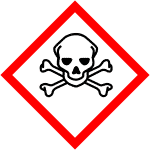
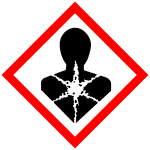
GHS06, GHS08 |
|---|---|
| 信号词 | Danger |
| 危害声明 | H300-H351 |
| 警示性声明 | P201-P202-P280-P301 + P310 + P330-P308 + P313-P501 |
| 个人防护装备 | Eyeshields;Faceshields;full-face particle respirator type N100 (US);Gloves;respirator cartridge type N100 (US);type P1 (EN143) respirator filter;type P3 (EN 143) respirator cartridges |
| 危害码 (欧洲) | T:Toxic |
| 风险声明 (欧洲) | R25;R40 |
| 安全声明 (欧洲) | S36/37-S45-S28A-S28 |
| 危险品运输编码 | UN 3462 6.1/PG 2 |
| WGK德国 | 3 |
| RTECS号 | CN0700000 |
| 包装等级 | II |
| 危险类别 | 6.1(a) |
Synonym:Ametycine Section 2 - COMPOSITION, INFORMATION ON INGREDIENTS
Risk Phrases: 25 33 Section 3 - HAZARDS IDENTIFICATION EMERGENCY OVERVIEW
Toxic if swallowed. Danger of cumulative effects. Potential Health Effects Eye: May cause eye irritation. Skin: May cause skin irritation. Ingestion: Harmful if swallowed. May cause liver damage. May cause digestive tract disturbances. May cause bone marrow depression. Inhalation: May cause respiratory tract irritation. May cause effects similar to those described for ingestion. May cause pulmonary fibrosis and permanent damage. Chronic: May cause cancer according to animal studies. Chronic exposure may cause liver damage. Adverse reproductive effects have been reported in animals. Potential cancer hazard. Section 4 - FIRST AID MEASURES Eyes: Flush eyes with plenty of water for at least 15 minutes, occasionally lifting the upper and lower eyelids. Get medical aid. Skin: Get medical aid. Flush skin with plenty of water for at least 15 minutes while removing contaminated clothing and shoes. Wash clothing before reuse. Ingestion: Do not induce vomiting. If victim is conscious and alert, give 2-4 cupfuls of milk or water. Never give anything by mouth to an unconscious person. Get medical aid. Inhalation: Remove from exposure and move to fresh air immediately. If not breathing, give artificial respiration. If breathing is difficult, give oxygen. Get medical aid. Do NOT use mouth-to-mouth resuscitation. Notes to Physician: Section 5 - FIRE FIGHTING MEASURES General Information: As in any fire, wear a self-contained breathing apparatus in pressure-demand, MSHA/NIOSH (approved or equivalent), and full protective gear. During a fire, irritating and highly toxic gases may be generated by thermal decomposition or combustion. Non-combustible, substance itself does not burn but may decompose upon heating to produce irritating, corrosive and/or toxic fumes. Extinguishing Media: In case of fire, use water, dry chemical, chemical foam, or alcohol-resistant foam. Substance is noncombustible; use agent most appropriate to extinguish surrounding fire. Section 6 - ACCIDENTAL RELEASE MEASURES General Information: Use proper personal protective equipment as indicated in Section 8. Spills/Leaks: Clean up spills immediately, observing precautions in the Protective Equipment section. Sweep up, then place into a suitable container for disposal. Avoid generating dusty conditions. Provide ventilation. Section 7 - HANDLING and STORAGE Handling: Wash thoroughly after handling. Remove contaminated clothing and wash before reuse. Use only in a well-ventilated area. Minimize dust generation and accumulation. Do not get in eyes, on skin, or on clothing. Keep container tightly closed. Do not ingest or inhale. Storage: Do not store in direct sunlight. Keep container closed when not in use. Store in a cool, dry, well-ventilated area away from incompatible substances. Hormones and antibiotics room. Store below 40C. Section 8 - EXPOSURE CONTROLS, PERSONAL PROTECTION Engineering Controls: Facilities storing or utilizing this material should be equipped with an eyewash facility and a safety shower. Use adequate general or local exhaust ventilation to keep airborne concentrations below the permissible exposure limits. Exposure Limits CAS# 50-07-7: CAS# 7647-14-5: Russia: 5 mg/m3 TWA Personal Protective Equipment Eyes: Wear safety glasses and chemical goggles if splashing is possible. Skin: Wear appropriate protective gloves and clothing to prevent skin exposure. Clothing: Wear appropriate protective clothing to minimize contact with skin. Respirators: A respiratory protection program that meets OSHA's 29 CFR 1910.134 and ANSI Z88.2 requirements or European Standard EN 149 must be followed whenever workplace conditions warrant respirator use. Section 9 - PHYSICAL AND CHEMICAL PROPERTIES Physical State: Crystalline powder Color: blue-violet Odor: None reported. pH: Not available. Vapor Pressure: Not available. Viscosity: Not available. Boiling Point: Not available. Freezing/Melting Point: > 360 deg C Autoignition Temperature: Not applicable. Flash Point: Not applicable. Explosion Limits, lower: Not available. Explosion Limits, upper: Not available. Decomposition Temperature: Solubility in water: soluble Specific Gravity/Density: Molecular Formula: C15H18N4O5 Molecular Weight: 334.32 Section 10 - STABILITY AND REACTIVITY Chemical Stability: Stable under normal temperatures and pressures. Conditions to Avoid: Incompatible materials, light, dust generation, excess heat, temperatures above 40C. Incompatibilities with Other Materials: Strong oxidizing agents - strong acids - strong bases. Hazardous Decomposition Products: Nitrogen oxides, carbon monoxide, carbon dioxide, nitrogen. Hazardous Polymerization: Has not been reported. Section 11 - TOXICOLOGICAL INFORMATION RTECS#: CAS# 50-07-7: CN0700000 CAS# 7647-14-5: VZ4725000 LD50/LC50: CAS# 50-07-7: Oral, mouse: LD50 = 23 mg/kg; Oral, rat: LD50 = 30 mg/kg. CAS# 7647-14-5: Draize test, rabbit, eye: 100 mg Mild; Draize test, rabbit, eye: 100 mg/24H Moderate; Draize test, rabbit, eye: 10 mg Moderate; Draize test, rabbit, skin: 50 mg/24H Mild; Draize test, rabbit, skin: 500 mg/24H Mild; Inhalation, rat: LC50 = >42 gm/m3/1H; Oral, mouse: LD50 = 4 gm/kg; Oral, rat: LD50 = 3000 mg/kg; Skin, rabbit: LD50 = >10 gm/kg. Carcinogenicity: Mitomycin C - California: carcinogen, initial date 4/1/88 IARC: Group 2B carcinogen Sodium chloride - Not listed by ACGIH, IARC, or NTP. Other: See actual entry in RTECS for complete information. Section 12 - ECOLOGICAL INFORMATION Section 13 - DISPOSAL CONSIDERATIONS Dispose of in a manner consistent with federal, state, and local regulations. Section 14 - TRANSPORT INFORMATION IATA Shipping Name: TOXIC SOLID, ORGANIC, N.O.S.* Hazard Class: 6.1 UN Number: 2811 Packing Group: II IMO Shipping Name: TOXIC SOLID, ORGANIC, N.O.S. Hazard Class: 6.1 UN Number: 2811 Packing Group: II RID/ADR Shipping Name: TOXIC SOLID, ORGANIC, N.O.S. Hazard Class: 6.1 UN Number: 2811 Packing group: II USA RQ: CAS# 50-07-7: 10 lb final RQ; 4.54 kg final RQ Section 15 - REGULATORY INFORMATION European/International Regulations European Labeling in Accordance with EC Directives Hazard Symbols: T Risk Phrases: R 25 Toxic if swallowed. R 33 Danger of cumulative effects. Safety Phrases: S 45 In case of accident or if you feel unwell, seek medical advice immediately (show the label where possible). WGK (Water Danger/Protection) CAS# 50-07-7: 3 CAS# 7647-14-5: 0 Canada CAS# 50-07-7 is listed on Canada's NDSL List. CAS# 7647-14-5 is listed on Canada's DSL List. CAS# 50-07-7 is not listed on Canada's Ingredient Disclosure List. CAS# 7647-14-5 is not listed on Canada's Ingredient Disclosure List. US FEDERAL TSCA CAS# 50-07-7 is listed on the TSCA inventory. CAS# 7647-14-5 is listed on the TSCA inventory. SECTION 16 - ADDITIONAL INFORMATION N/A |
|
~10% 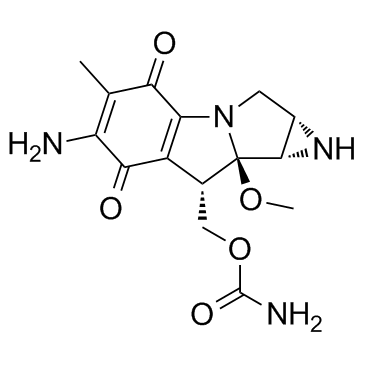
50-07-7 |
| 文献:Kasai; Kono; Ikeda; Yoda; Hirayama Journal of Organic Chemistry, 1992 , vol. 57, # 26 p. 7296 - 7299 |
|
~81% 
50-07-7 |
| 文献:Arai, Hitoshi; Kasai, Masaji Journal of Organic Chemistry, 1993 , vol. 58, # 15 p. 4151 - 4152 |
|
~73% 
50-07-7 |
| 文献:Kasai; Kono; Ikeda; Yoda; Hirayama Journal of Organic Chemistry, 1992 , vol. 57, # 26 p. 7296 - 7299 |
|
~% 
50-07-7 |
| 文献:Kasai; Kono; Ikeda; Yoda; Hirayama Journal of Organic Chemistry, 1992 , vol. 57, # 26 p. 7296 - 7299 |
|
~79% 
50-07-7 |
| 文献:Furuhata; Komiyama; Takeda; Takayanagi; Torii; Mishima; Ogura; Hata Chemical and Pharmaceutical Bulletin, 1989 , vol. 37, # 10 p. 2651 - 2654 |
|
~20% 
50-07-7
详细
|
| 文献:Vyas, D. M.; Chiang, Y.; Benigni, D.; Doyle, T. W. Journal of Organic Chemistry, 1987 , vol. 52, # 25 p. 5601 - 5605 |
|
~% 
50-07-7 |
| 文献:Senter; Pearce; Greenfield Journal of Organic Chemistry, 1990 , vol. 55, # 9 p. 2975 - 2978 |
|
~% 
50-07-7 |
| 文献:Chen; Coppola; Johns; Bogardus; Lipper Journal of Pharmaceutical Sciences, 1986 , vol. 75, # 2 p. 208 - 210 |
|
~% 
50-07-7 |
| 文献:Danishefsky; Ciufolini Journal of the American Chemical Society, 1984 , vol. 106, # 21 p. 6424 - 6425 |
| 上游产品 6 | |
|---|---|
| 下游产品 5 | |

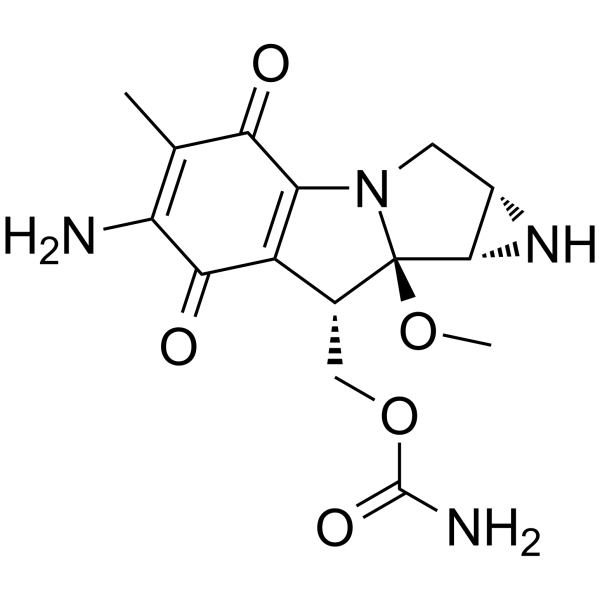
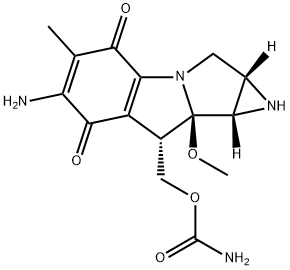

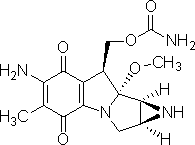
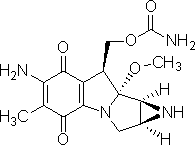
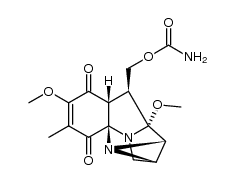
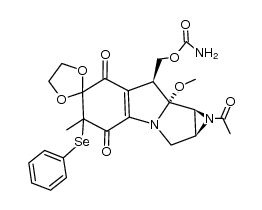
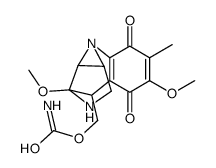
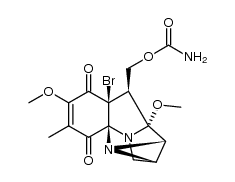

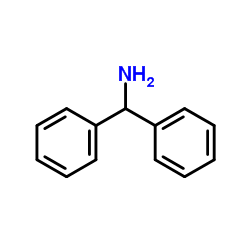
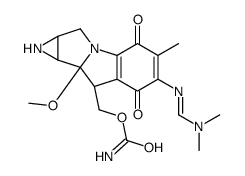
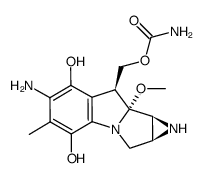
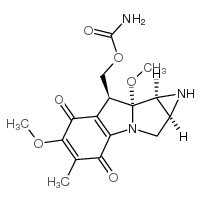
![Azirino[2',3':3,4]pyrrolo[1,2-a]indole-4,7-dione,8-[[(aminocarbonyl)oxy]methyl]-1,1a,2,8,8a,8b-hexahydro-8a-methoxy-5-methyl-6-(methylamino)-,[1aS-(1aa,8b,8aa,8ba)]- (9CI)结构式](/20230522/27066-44-0.png)
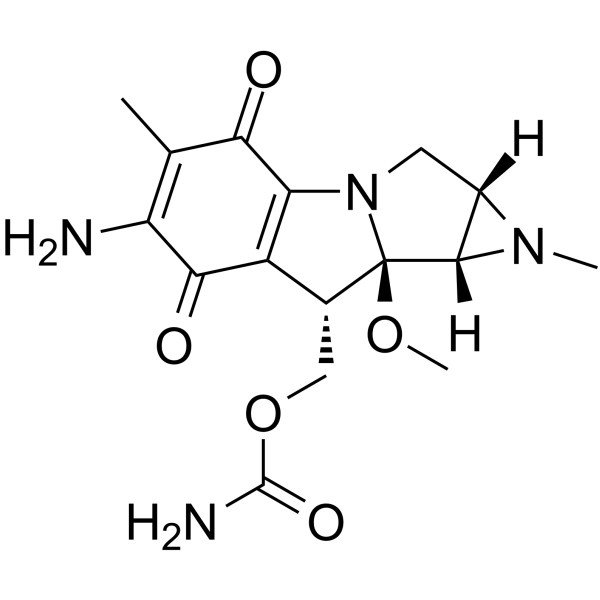
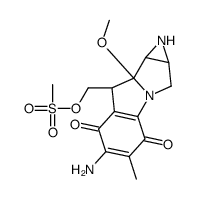
![Azirino[2',3'_3,4]pyrrolo[1,2-.α.]indole-4,7-dione, 1,1a,2,8,8a,8b-hexahydro-6-hydroxy-8-(hydroxymethyl)-8a-methoxy-5-methyl-, 8-carbamate结构式](/20230522/7041-61-4.png)





 浙公网安备 33010802013016号
浙公网安备 33010802013016号